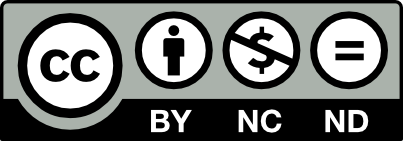The art of psychotherapy in Bateson’s thought
Abstract
Is psychotherapy science or art? Moving from this question, this paper addresses the Batesonian epistemology set forth in Toward an Ecology of Mind.
Beginning with the observation that 'in the natural history of the living human being, ontology and epistemology cannot be separated,' I focus on 'interconnected circuits of contingency,' that is, those circuits in which matter and thought are not split, but complementary components of a mental process, whose boundaries do not coincide at all with the boundaries of the body, ego or consciousness.
A concepts such as the “conscious purpose”, described as man's position with respect to life processes in front of which we can only interact by preparing the conditions as well as keeping in mind that the whole process does not depend on the willingness, is considered. The concept of “conscious purpose” is closely related to the concept of 'I,' a false reification of a larger system of interconnected processes.
In the psychotherapy setting, these concepts interrogate us and conjugate in the clinical setting. What changes can be hypothesized, starting from a position of wisdom, to distinguish what cannot be changed from what is possible to change ?. Finally, the paper dwells on the concept of 'double-bind' considered not as a diagnostic observational tool, but as a guide in therapy that allows the reification of the 'I' and familiar recognition processes to be processed.
Downloads
Downloads
Published
Issue
Section
License
Copyright (c) 2022 Pasquale Busso

This work is licensed under a Creative Commons Attribution-NonCommercial-NoDerivatives 4.0 International License.
Authors who publish in this journal agree to the following:
- Authors retain the rights to their work and give to the journal right of first publication of the work simultaneously licensed under a Creative Commons License - Attribution that allows others to share the work indicating the authorship and the first publication of this journal.
- Authors can accept other non-exclusive licensing agreements for the distribution of the published version of the work (eg. Deposit it in an institutional repository or publish it in a monograph), provided to indicate that the document was first published in this journal.
- Authors can spread their work online (eg. In institutional repositories or on their website) before and during the submission process, because it can lead to productive exchanges and increase the work published citations (See The Effect of Open Access) .





